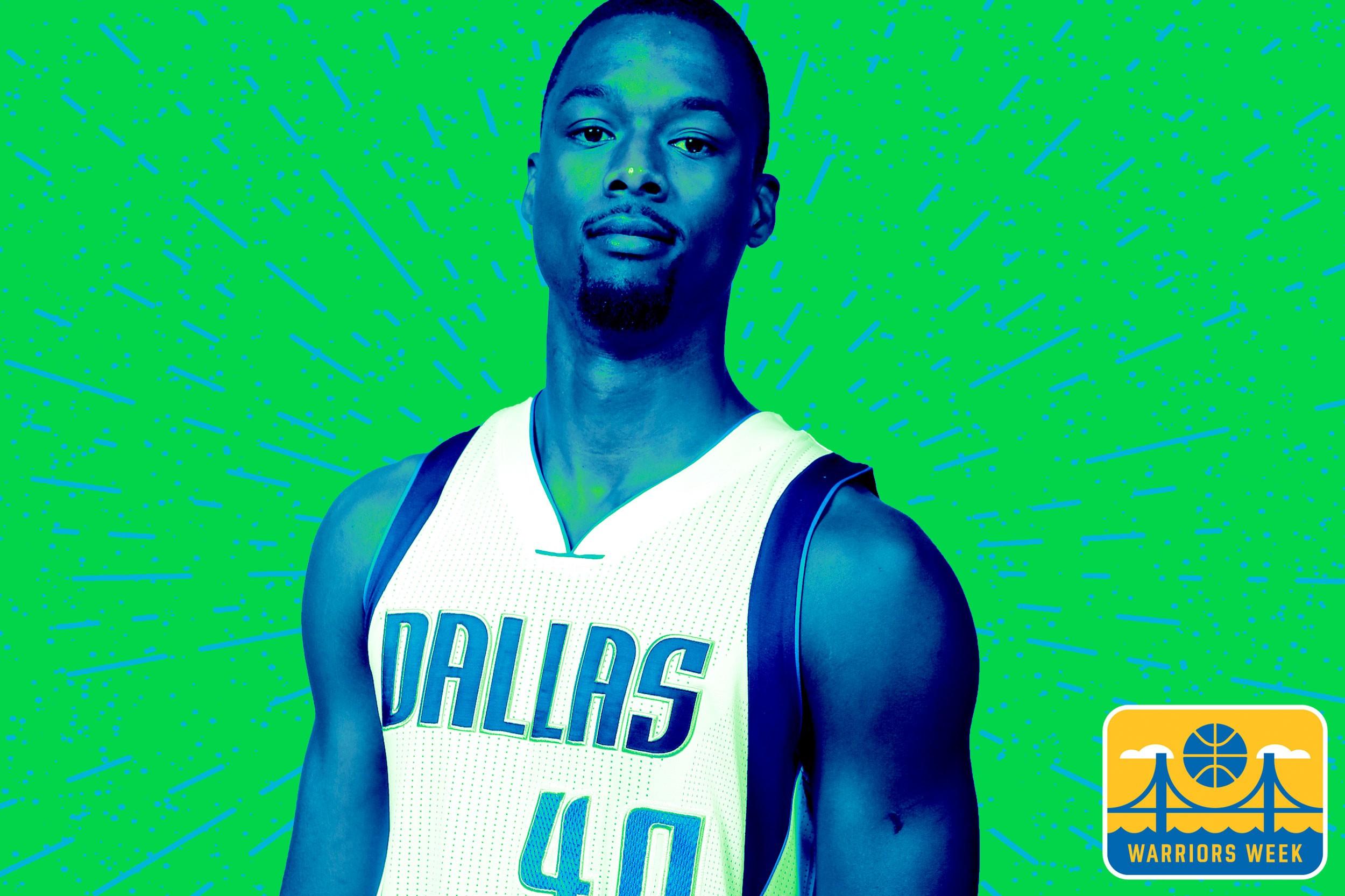Is a Change in Scenery All Harrison Barnes Needed?
With a new role on a new team, the Warriors’ afterthought gets his second chance at becoming the star we all thought he would be
After a long summer of topless championship parades, free-agency meetings in the Hamptons, Snapchat mishaps, and gold medals, the NBA is finally, truly, really, almost back. The start of training camp marks the beginning of our NBA Preview.
We kick things off with Warriors Week, an in-depth look at one of the most interesting assemblages of basketball talent ever. We’ll have a different theme each week, as well as the usual league coverage. So check back often. Basketball never sleeps, and neither do we.

The last time we saw Harrison Barnes, he was missing open shot after open shot in the NBA Finals. The Cavs stopped guarding him halfway through the series, leaving him open at the 3-point line and daring him to beat them. The weird part about their strategy was that Barnes isn’t a bad shooter. He’s not Tony Allen. He just got exposed as the weakest link in the Warriors’ starting lineup on the biggest possible stage. It was an ugly end to four up-and-down seasons in Golden State for Barnes, who showed flashes of greatness but never lived up to the immense expectations placed on him.
The irony about Kevin Durant replacing Barnes is that Barnes was supposed to be the next Kevin Durant coming out of high school. He was one of the most hyped recruits of the last generation, the first freshman to be named a preseason first-team All-American in 24 years of voting. At the age of 18, before he played a second of college basketball, he already looked the part of an NBA superstar. He had the size, the athleticism, the shooting touch, and the polish — both on and off the court.
Once the games started, though, something was missing. Barnes always left people wanting more. He couldn’t translate his athleticism to on-court dominance, and he was the king of the empty possession, jab-stepping his way into contested midrange jumpers without making nearly enough to justify taking so many. He was the fifth Beatle in the Lineup of Death, with a trudging offensive sensibility more suited to Mark Jackson’s isolation-heavy offense than the free-flowing motion that Steve Kerr preferred. Warriors games were jam sessions, and Barnes was always slightly off-tune and a little behind the beat.
The Mavs signed him to a four-year, $94 million contract in the offseason, but he wasn’t their Plan A. They opened free agency trying to sign Mike Conley, Nicolas Batum, and Hassan Whiteside in order to form the most bootleg superteam imaginable, only to be left scrambling when all three re-signed with their original teams. Signing Barnes was a concession to the obvious. If the Mavs could not compete for the top players in the free-agent market, their only hope of acquiring a star was signing someone with the potential to grow into one. Forget becoming the next Durant. The Mavs are just hoping Barnes can be what Chandler Parsons was supposed to be.
Dirk Nowitzki hinted at a comparison between the two at the Mavs’ media day on Monday: “There have been a ton of guys who signed [in Dallas] and told me they were gym rats, but I never saw them in the gym at night. [Barnes] is constantly working. He wants to be great. You want a guy like that to succeed.” With Parsons now enjoying a max contract in Memphis, media day was a safe space for subtweets.
The biggest difference Barnes can make in Dallas is on the defensive end of the floor. At 6-foot-8 and 225 pounds, he’s more athletic than Parsons, and he can swing among multiple positions on defense. “I can finally guard my position. I can guard 2-guards,” said Wesley Matthews, who often matched up with small forwards last season to take some of the pressure off Parsons. “[Barnes] makes this team more versatile, and it gives coach [Rick Carlisle] more opportunities to get creative with matchups, game plans, and schemes. He gives us size against bigger 3s and smaller 4s.”
Barnes was most effective in Golden State as a small-ball 4. He is solidly built and deceptively strong, and it’s hard even for behemoths like Zach Randolph to push him off his spots. Opposing players scored only 0.717 points per possession when they posted up Barnes last season, which put him in the 83rd percentile of post defenders in the NBA, according to Synergy Sports. The number is even more impressive when you consider how often he gave up size in those situations.
When Barnes was playing in more conventional lineups with Draymond Green at the 4 and Andrew Bogut at the 5, he was an average offensive player. When he was playing at the 4, with either Bogut or Green as the sole big man on the floor, his productivity skyrocketed. Numbers courtesy of NBA Wowy:

Taking an opponent off the dribble is easier when he’s bigger and slower than it is when he can match your athleticism. And it’s easier to get open looks when you are playing in more space, with one less defender between you and the basket. “The biggest difference between playing the 3 and the 4 is defensive responsibility. As a 3, you are able to roam a bit, but you mostly lock in to your man,” said Barnes. “As a 4, you call a lot more pick-and-roll coverages, and a lot of the rebounding responsibility comes to you. You have to be smart about rim protection, knowing that there’s not somebody behind you.”
The best stretch of Barnes’s time in Golden State came all the way back in his rookie year in 2013, when an injury to David Lee in the first round of the playoffs opened up a spot for Barnes as the starting 4 next to Bogut. He averaged 16.1 points on 44.4 percent shooting in the playoffs, as the Warriors made their first splash on the national stage. He was never able to match those numbers again, in large part because Green jumped ahead of him in the Warriors’ pecking order.
A lot has changed in the NBA in the following three years. The league has gotten smaller across the board. “I expect I’ll play a lot of 4 this season because everyone plays a small-ball lineup,” said Barnes. One of the Mavs’ most intriguing lineups will involve Barnes at the 4 next to fellow Golden State refugee Bogut at the 5, with Matthews and Justin Anderson as 3-and-D wings on the perimeter. “That’s an exciting lineup because it gives you a group that can switch [screens] and do things defensively that give us flexibility,” said Carlisle.
Of course, there’s one notable player not in that lineup. Since Kevin Garnett and Tim Duncan retired this offseason, Dirk is one of the only remaining holdovers from a previous generation of NBA basketball, when stretch 4s, not small-ball 4s, were en vogue. “You can’t have enough shooting. You can’t have enough athletes. We should be able to have a great defensive lineup when I’m out of the game,” said Dirk with a wry chuckle.
The biggest change for the Mavs this offseason wasn’t any one transaction; it was the reality that building around Dirk can no longer be their main priority. They had to start looking toward the future. A noncontending team whose best player is 38 doesn’t really have a choice. It’s similar to the situation the Lakers were in with Kobe Bryant in his last few years in the NBA; the Mavs gave Dirk a two-year, $50 million lifetime-achievement contract. The difference is there’s no D’Angelo Russell, Julius Randle, or Brandon Ingram in Dallas. There’s not even a Jordan Clarkson. The closest thing the Mavs have to that type of high-upside flier is Barnes. The Mavericks spent the past five years looking for players to complement Dirk. They might have just ended up with the guy who is going to replace him.

